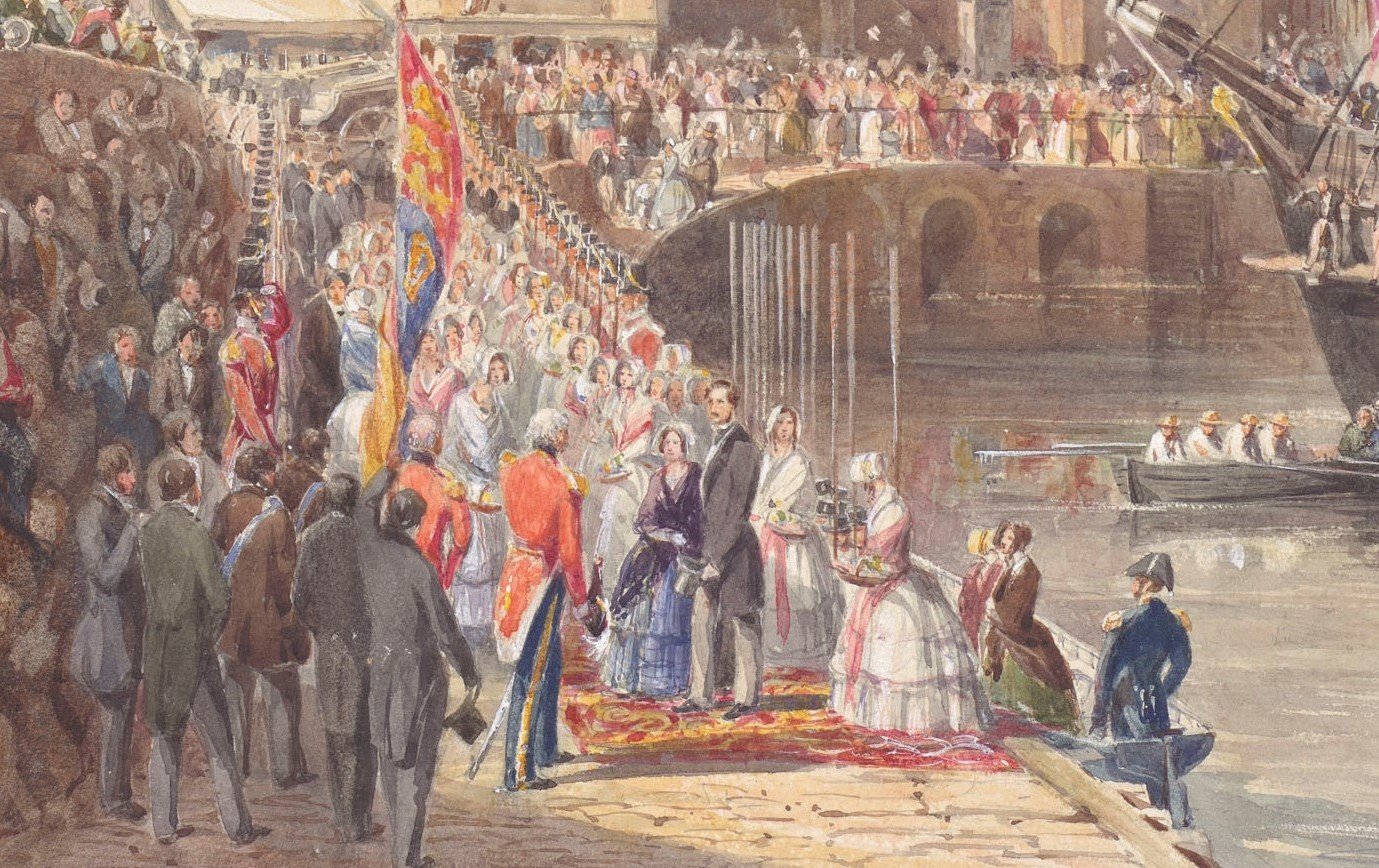
GABRIELE MARIANO NICOLAI CARELLI (1821-1900)
The interior of the Royal Mausoleum, Frogmore
dated 1880Pencil and watercolour | 45.4 x 33.1 cm (sheet of paper) | RCIN 919746
A watercolour view of the colourful interior of the Royal Mausoleum at Frogmore, looking from the chapel of the Nativity (with the corner of the statue of Princess Alice seen on the left), diagonally across to the Chapel of the Altar with Prince Albert's sarcophagus in the centre. Signed and dated at bottom right: Gab. Carelli / 1880.
Queen Victoria and Prince Albert had long planned to build a mausoleum for their final resting place - a burial tradition that was more Germanic than English - and within a few days of Albert's premature death on 14 December 1861 Victoria had chosen a site close to the mausoleum recently built for her mother the Duchess of Kent, who had died earlier that year. The Queen discussed the design and decoration of the Royal Mausoleum, designed by the architect A.J. Humbert, at length with her eldest child Vicky, Princess of Prussia, who had inherited her father's artistic tastes. The polychromatic interior decoration, supervised by Ludwig Grüner, was inspired by Albert's love for the Italian Renaissance artist Raphael. Baron Carlo Marochetti was charged with sculpting the Prince's effigy, and made one of Queen Victoria at the same time which was then installed in the mausoleum after her death. A monument to Princess Alice, the royal couple's second daughter who died in 1878 on the anniversary of her father's death, was also erected in the space. Queen Victoria laid the foundation stone for the Royal Mausoleum in March 1862, and regularly visited it when in residence at Windsor Castle.
Queen Victoria and Prince Albert had long planned to build a mausoleum for their final resting place - a burial tradition that was more Germanic than English - and within a few days of Albert's premature death on 14 December 1861 Victoria had chosen a site close to the mausoleum recently built for her mother the Duchess of Kent, who had died earlier that year. The Queen discussed the design and decoration of the Royal Mausoleum, designed by the architect A.J. Humbert, at length with her eldest child Vicky, Princess of Prussia, who had inherited her father's artistic tastes. The polychromatic interior decoration, supervised by Ludwig Grüner, was inspired by Albert's love for the Italian Renaissance artist Raphael. Baron Carlo Marochetti was charged with sculpting the Prince's effigy, and made one of Queen Victoria at the same time which was then installed in the mausoleum after her death. A monument to Princess Alice, the royal couple's second daughter who died in 1878 on the anniversary of her father's death, was also erected in the space. Queen Victoria laid the foundation stone for the Royal Mausoleum in March 1862, and regularly visited it when in residence at Windsor Castle.




